Spider venom is a complex cocktail of proteins, peptides, and small molecules that have evolved over millions of years to subdue prey and deter predators. It has long fascinated scientists and nature enthusiasts alike for its diverse range of effects on the human body, from harmless irritation to life-threatening consequences. Understanding spider venom is essential for the development of effective treatments, and also offers intriguing insights into the potential applications of these potent substances. In this article, we explore the various types of spider venom, their effects, and what to do if you’re bitten by a venomous spider.
Spider Venom Types: Neurotoxic
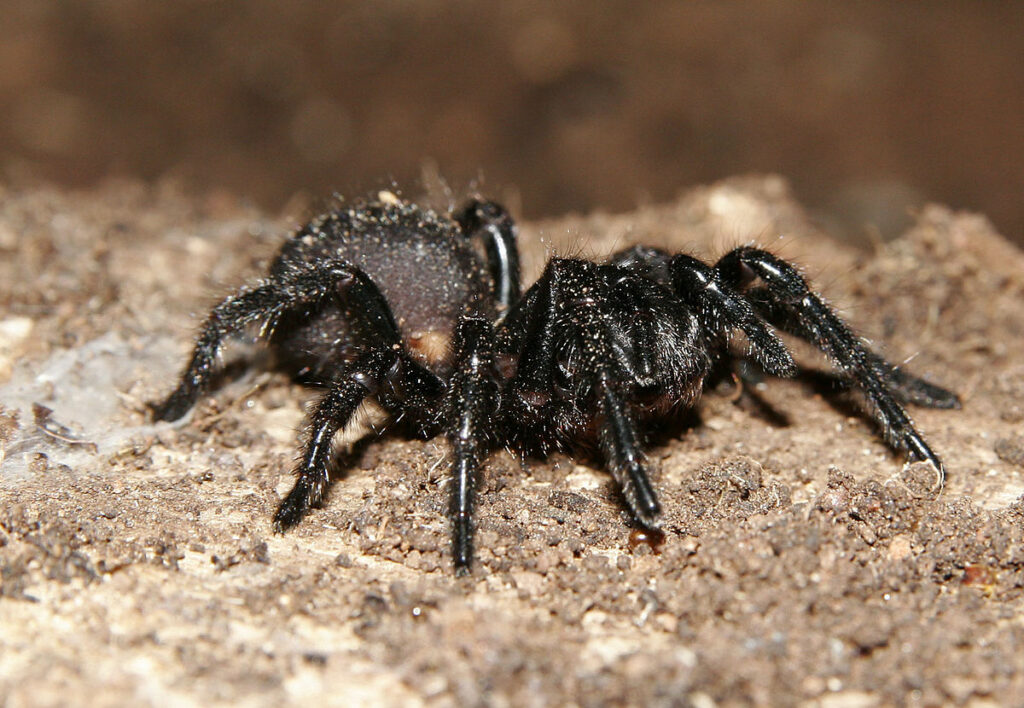
Characteristics and Effects
Neurotoxic venom primarily targets the nervous system, particularly the neurotransmitters that relay signals between nerve cells. When bitten by a spider with neurotoxic venom, the venom rapidly binds to receptors on nerve cells, blocking or altering the transmission of signals. This disruption can lead to a range of effects, including muscle weakness, paralysis, and potentially respiratory failure, depending on the venom’s potency. In severe cases, the victim may experience intense pain, uncontrollable muscle spasms, and even seizures.
Example: Funnel-Web Spider
Funnel-web spiders, native to Australia, are notorious for their potent neurotoxic venom. They are among the few spiders with venom lethal to humans, especially the Sydney funnel-web spider. Their venom contains δ-hexatoxin, a powerful toxin that binds to nerve cell receptors, prolonging the activation of sodium channels. This results in continuous nerve firing and sustained muscle contractions, leading to severe pain, muscle spasms, and potentially fatal respiratory paralysis.
Treatment
Bites from spiders with neurotoxic venom require immediate medical attention. Antivenom, developed from the antibodies of animals exposed to the venom, is typically administered to counteract the venom’s effects and restore normal nerve function. The timely administration of antivenom is crucial, especially for funnel-web spider bites, as delays can result in severe complications or death.
Spider Venom Types: Hemotoxic
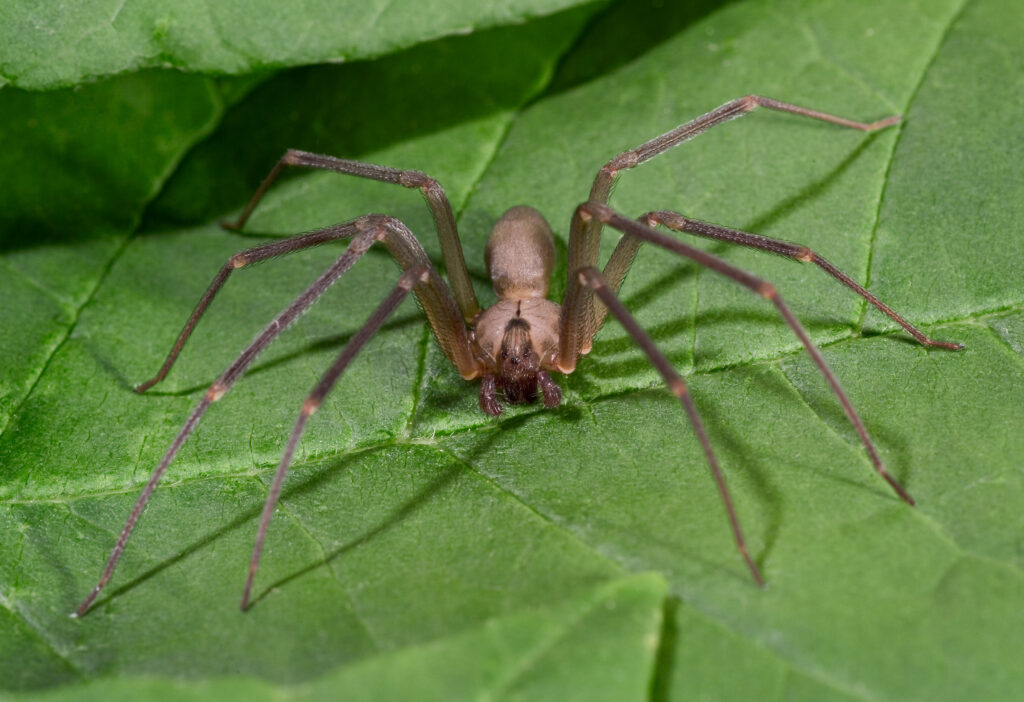
Characteristics and Effects
Hemotoxic venom directly affects the circulatory system, disrupting blood clotting and damaging blood vessels. The venom contains enzymes that break down proteins in the blood, leading to uncontrolled bleeding, tissue damage, and extensive bruising. These effects can cause complications like anaemia, organ damage, or internal bleeding if left untreated. Additionally, the victim may experience intense pain, swelling, and discolouration around the bite site, as well as systemic symptoms such as fever, chills, and muscle aches.
Example: Brown Recluse Spider
The Brown recluse spider, found in North America, produces hemotoxic venom that causes extensive tissue damage and necrosis, often referred to as “necrotic arachnidism.” Its venom contains enzymes like sphingomyelinase D, which breaks down cell membranes, leading to cell lysis, blood vessel destruction, and the formation of painful, necrotic ulcers.
Treatment
Treatment for hemotoxic venom bites typically involves cleaning the wound, applying a cold compress, and elevating the affected area to reduce swelling. Pain relief medication may be administered, but it is essential to consult a healthcare professional before taking any medication, as some drugs may exacerbate bleeding. In severe cases, wound debridement, skin grafts, or blood transfusions may be necessary.
Spider Venom Types: Cytotoxic
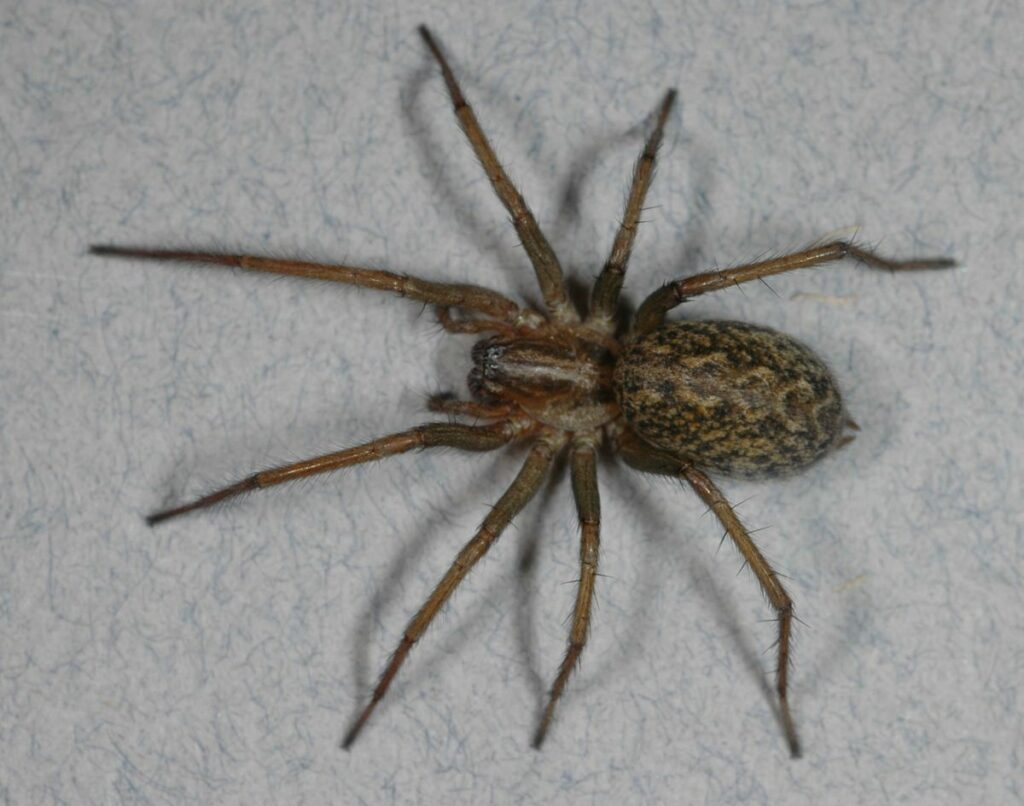
Characteristics and Effects
Cytotoxic venom targets and destroys cells and tissues at the bite site, causing localised pain, swelling, and inflammation. This type of venom may lead to severe tissue damage and necrosis, often requiring surgical intervention. Cytotoxic venom contains enzymes that break down cell membranes and proteins, leading to cell disintegration, tissue damage, and the release of inflammatory mediators, exacerbating the local response.
Example: Hobo Spider
The Hobo spider, native to North America, produces cytotoxic venom that causes tissue damage and necrosis. Bites from this spider can cause symptoms like redness, pain, and a slow-healing wound, often accompanied by a blister or ulcer. The venom contains enzymes that break down cell membranes and proteins, leading to cell death, tissue damage, and inflammation.
Treatment
Treatment for cytotoxic venom bites includes cleaning the wound with soap and water, applying a cold compress to reduce swelling, and seeking medical attention. Antibiotics may be prescribed to prevent secondary bacterial infections, and in some cases, surgical debridement may be necessary to remove necrotic tissue and promote wound healing.
Spider Venom Types: Necrotic
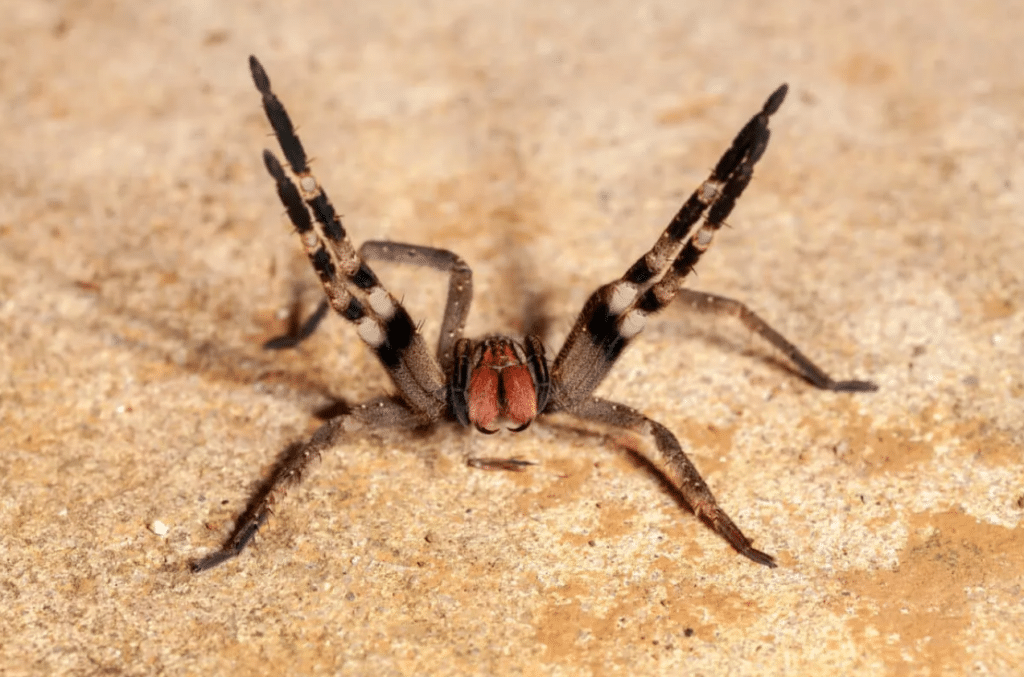
Characteristics and Effects
Necrotic venom causes tissue destruction by breaking down cells and triggering cell death. This type of venom leads to severe localised damage, necrosis, and potentially long-lasting scars. It is characterised by the rapid onset of pain, swelling, and skin discolouration, followed by the formation of blisters, ulcers, and dead tissue. The venom often contains a combination of enzymes, peptides, and toxins that break down cell membranes, disrupt cellular function, and induce inflammatory responses.
Example: Brazilian Wandering Spider
The Brazilian wandering spider, one of the most venomous spiders globally, produces necrotic venom that causes severe pain, tissue damage, and necrosis. Its venom contains enzymes, peptides, and neurotoxins that break down cell membranes, disrupt cell function, and induce pain and inflammation. Bites from this spider can cause intense pain, swelling, skin discolouration, and necrotic ulcers that may take weeks or months to heal.
Treatment
Seek medical attention immediately for a bite from a spider with necrotic venom. Treatment typically involves wound cleaning, pain relief, and antibiotics to prevent infection. Surgical debridement may be necessary to remove dead tissue and promote wound healing. In severe cases, skin grafts may be required to cover large areas of tissue loss.
Spider Venom Types: Hemolytic
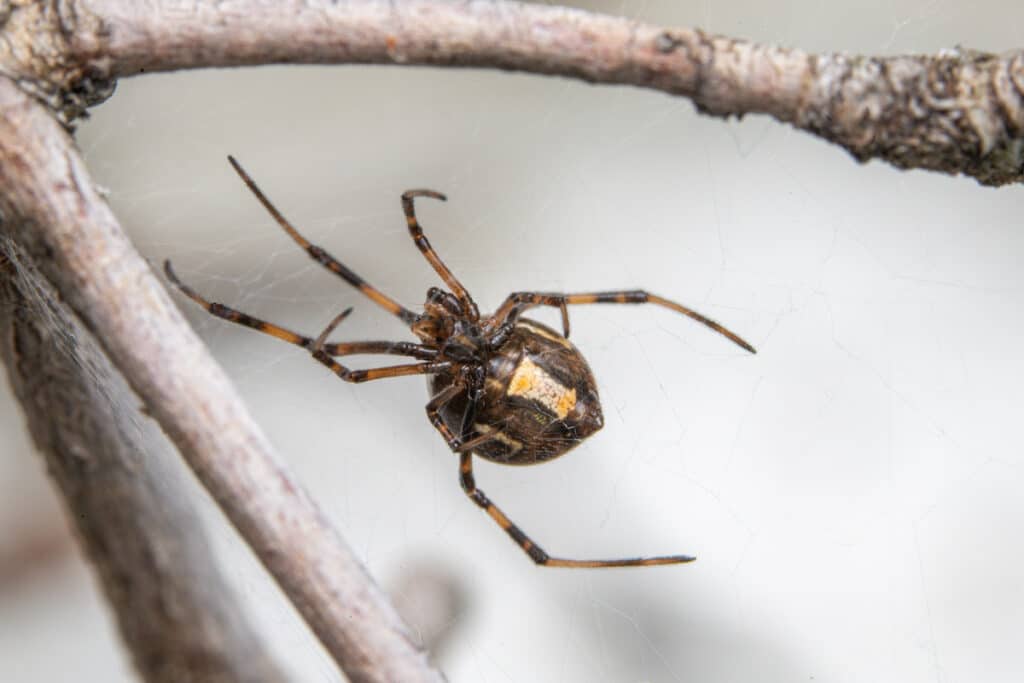
Characteristics and Effects
Hemolytic venom targets and destroys red blood cells, leading to anaemia, jaundice, and organ damage. This venom contains enzymes that break down cell membranes, causing red blood cell disintegration. As a result, victims may experience symptoms like fatigue, paleness, and jaundice, as well as dark urine, due to the presence of haemoglobin breakdown products. Hemolytic venom can also trigger systemic effects, such as fever, chills, and muscle aches.
Example: Brown Widow Spider
The Brown widow spider, found worldwide, has hemolytic venom that destroys red blood cells, leading to symptoms like fatigue, paleness, and jaundice. This spider’s venom contains enzymes that break down red blood cell membranes, leading to cell lysis and the release of haemoglobin into the bloodstream. In severe cases, acute hemolysis can lead to anaemia, jaundice, and kidney damage.
Treatment
Bites from spiders with hemolytic venom require medical attention. Treatment includes antivenom therapy, blood transfusions, and supportive care to manage anaemia and organ damage. Intravenous fluids and electrolytes may be administered to maintain hydration and kidney function, and pain relief medication may be prescribed to alleviate symptoms.
Spider Venom Types: Proteolytic
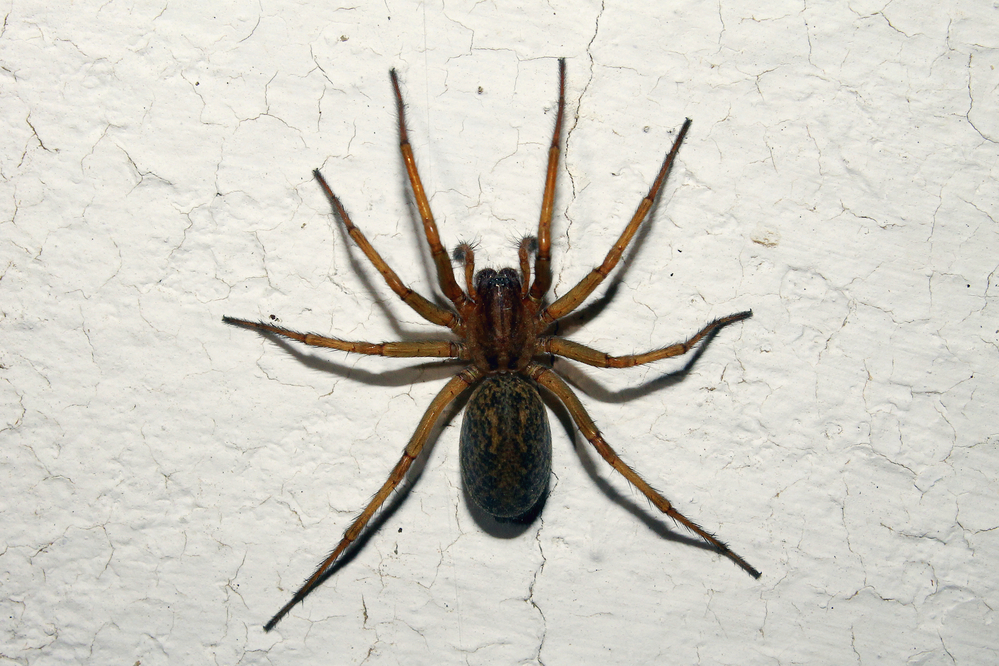
Characteristics and Effects
Proteolytic venom contains enzymes that break down proteins, leading to tissue and cell disintegration. This venom type primarily affects the skin and underlying tissues, causing redness, swelling, and potential tissue damage. Victims may experience intense pain, itching, and localised inflammation, which can progress to blistering, ulceration, and necrosis if left untreated.
Example: Wolf Spider
Wolf spiders, found worldwide, produce proteolytic venom that breaks down proteins and causes localised tissue damage. Their venom contains enzymes that digest cell membranes and extracellular matrix proteins, leading to tissue breakdown, inflammation, and pain. Bites from wolf spiders can cause redness, swelling, and blistering, often accompanied by a central area of tissue necrosis.
Treatment
Treatment for proteolytic venom bites includes cleaning the wound, applying ice packs, and administering antivenom if needed. Pain relief medication may be prescribed to alleviate symptoms, and antibiotics may be used to prevent secondary bacterial infections. In severe cases, wound debridement or skin grafts may be necessary to promote wound healing.
Spider Venom Types: Anticoagulant
Characteristics and Effects
Anticoagulant venom prevents blood clotting by inhibiting the coagulation cascade. This venom contains proteins that interfere with blood clotting factors, leading to uncontrolled bleeding. Victims may experience prolonged bleeding from the bite site, as well as easy bruising, spontaneous bleeding from the gums or nose, and bloody urine or stools.
Example: Jumping Spider
Jumping spiders, found worldwide, produce anticoagulant venom that affects blood clotting and can cause uncontrolled bleeding. Their venom contains proteins that inhibit the coagulation cascade, preventing the formation of blood clots and leading to prolonged bleeding from the bite site and other areas.
Treatment
Treatment for anticoagulant venom bites includes wound cleaning, pressure bandaging, and elevation of the affected area to reduce swelling and bleeding. Victims may require blood transfusions or clotting factor replacement therapy to manage bleeding complications. Seek medical attention immediately for bites from spiders with anticoagulant venom, especially if experiencing prolonged or severe bleeding.
Spider Venom Types: Paralytic
Characteristics and Effects
Paralytic venom targets the nervous system, causing muscle weakness and loss of bodily control. This venom disrupts neurotransmitter release, leading to paralysis and difficulty breathing. Symptoms may include numbness or tingling around the bite site, muscle weakness or paralysis, drooping eyelids, slurred speech, and difficulty swallowing or breathing.
Example: Redback Spider
The Redback spider, found in Australia, produces paralytic venom that affects the nervous system and causes muscle weakness, paralysis, and breathing difficulties. The venom contains neurotoxins that inhibit neurotransmitter release, leading to paralysis and loss of bodily control. Bites from redback spiders can cause intense pain, sweating, muscle spasms, and respiratory distress.
Treatment
Bites from spiders with paralytic venom require immediate medical attention. Antivenom is typically administered to counteract the venom’s effects and restore normal nerve function. Supportive care may include oxygen therapy, intubation, and mechanical ventilation to manage respiratory distress.
Spider Venom Types: Allergenic
Characteristics and Effects
Allergenic venom triggers severe allergic reactions in some individuals, leading to symptoms like itching, swelling, hives, and anaphylaxis in extreme cases. These reactions result from the immune system’s overactive response to venom proteins, releasing histamines and other inflammatory mediators.
Example: Common House Spider
The common house spider, found worldwide, produces allergenic venom that can trigger allergic reactions, ranging from mild itching to life-threatening anaphylaxis. Symptoms may include localised redness, swelling, and itching, as well as systemic effects such as difficulty breathing, rapid heart rate, and a drop in blood pressure.
Treatment
Seek medical help immediately if experiencing an allergic reaction from an allergenic venom bite. Treatment includes antihistamines to reduce itching and swelling, steroids to decrease inflammation, and epinephrine for anaphylaxis. Individuals with known venom allergies should carry an epinephrine auto-injector and seek emergency care after using it.
Conclusion
Understanding the different types of spider venom and their effects is essential for staying safe and responding appropriately to spider bites. While most spiders are harmless, it is vital to exercise caution and seek medical attention for bites from venomous spiders. As we continue to explore the potential therapeutic applications of spider venom, we uncover the fascinating world of these ancient creatures and the secrets they hold.
Sources and References
- Spider Ecophysiology by Wolfgang Nentwig
- Venomous Animals and Their Venoms: Volume II by Wolfgang Bücherl, Eleanor E. Buckley, and Venancio Deulofeu
- Biology of Spiders by Rainer F. Foelix
- Spider Venoms by P. Gopalakrishnakone, Gerardo A. Corzo, Maria Elena de Lima, and Elisabeth Ferroni Schwartz
Sam loves to learn about animals and their habitats. He has been a nature lover from a very young age, and has been writing papers and articles about wildlife for as long as he can remember.
